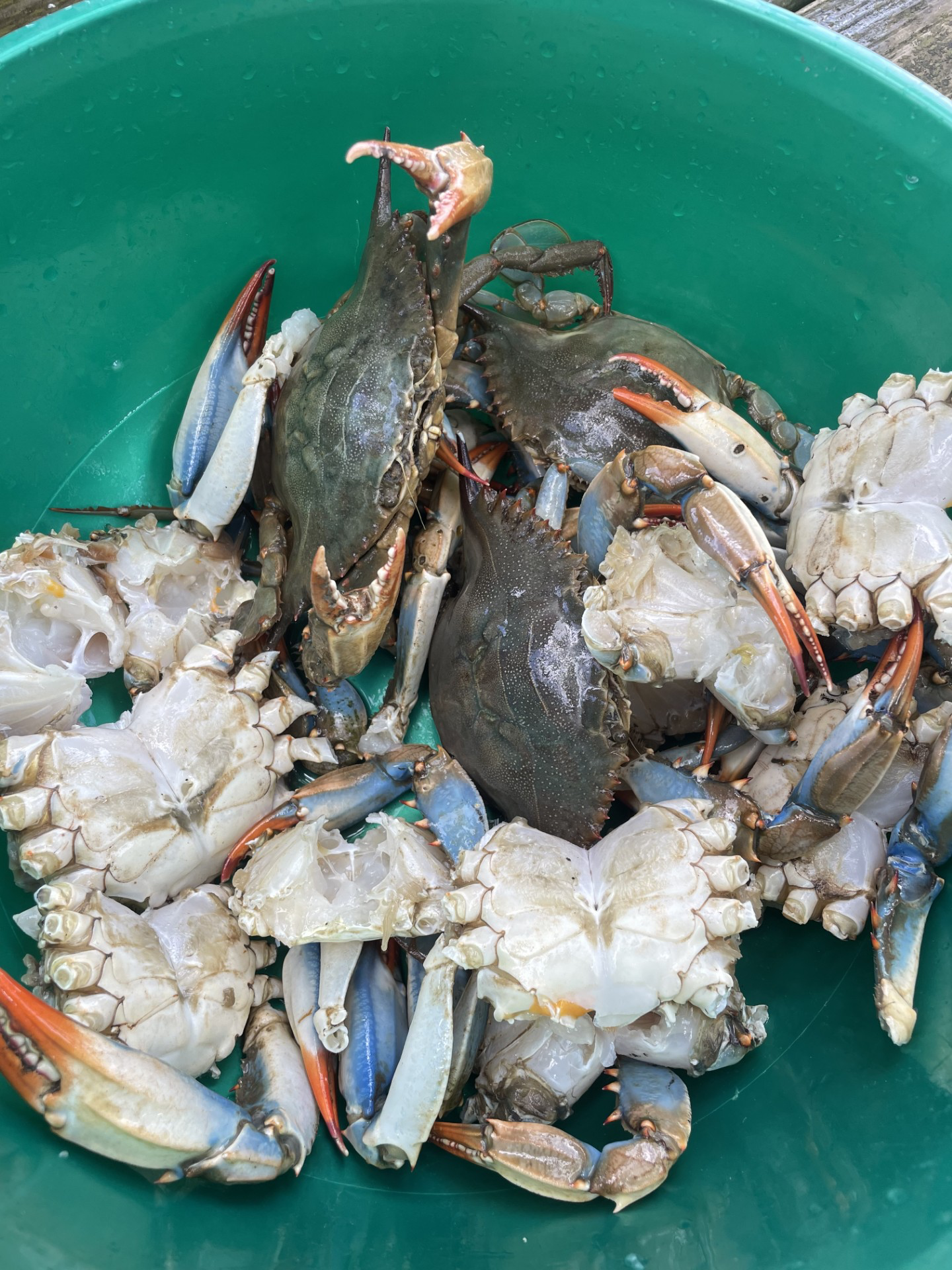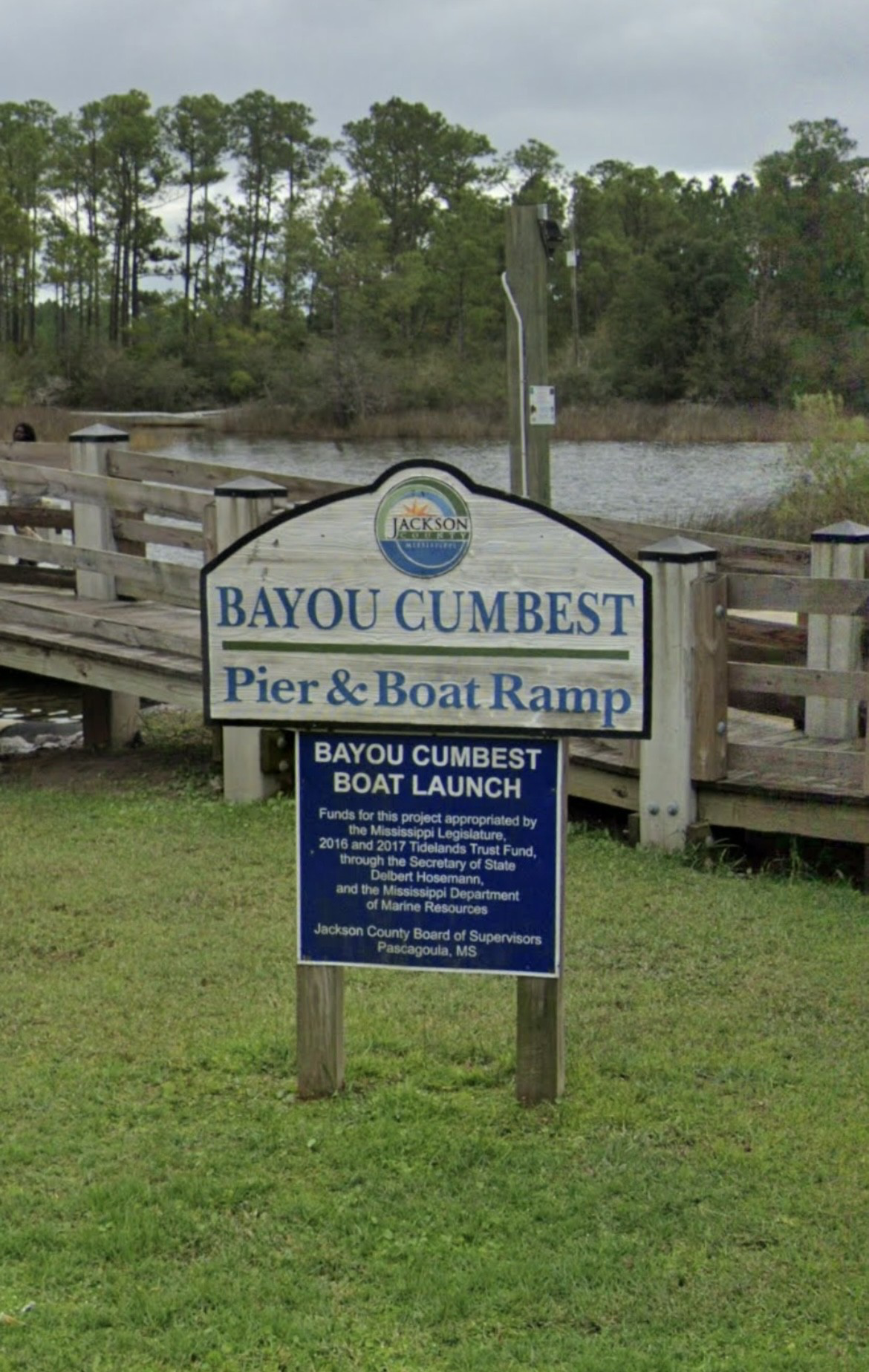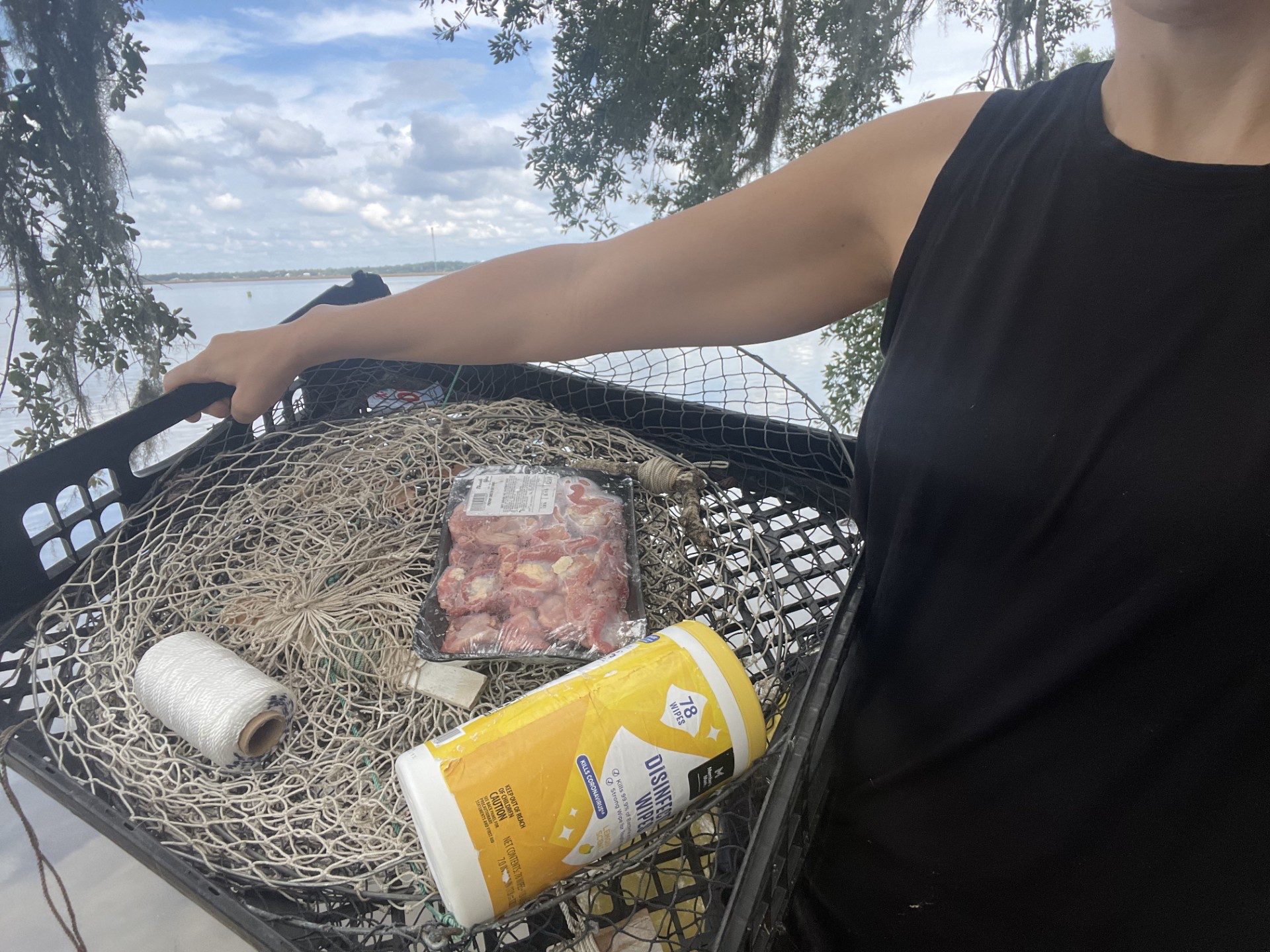There are few pastimes more classic along the Mississippi Gulf Coast than crabbing. It’s simple, inexpensive, and fun for all ages—whether you’re showing kids how to crab or chasing dinner on a quiet evening.
Best Spots to Crab
You don’t need a boat to enjoy crabbing—Mississippi’s coast is dotted with accessible piers, harbors, and shoreline spots. Here are some to try:
- Bay St. Louis Pier — roomy, family friendly, classic coastal pier.
- Ocean Springs — sandy stretches, public piers, good local access.
- Biloxi Bay (bridge area) — steady action thanks to structure and current.
- Gulfport Harbor — works well at night under lights.
- Pascagoula Beach Park — shallow, calm, great for kids.
- Spanish Fort Boat Launch (behind the LaPointe-Krebs Museum, Pascagoula) — This is one of my favorites because you can take the kids to the museum first and then step out back to crab or swim from the pier.
- Bayou Cumbest Pier & Boat Ramp (Pascagoula) — tucked away off Bayou Cumbest Road, a quieter spot for drop nets and relaxed crabbing.
Don’t forget about rivers, estuaries, and tidal creeks. Blue crabs tolerate brackish water, so when conditions are favorable, they often move upriver into backwaters—offering quieter crabbing away from the main piers.
When to Go
Crabbing is open year-round in most coastal waters south of Interstate 10, but the best seasons are generally fall and spring, when crabs are most active. Summer (June and July) also brings steady activity as the waters warm.
One note: from January 1 through March 31, a portion of water southwest of Cat Island is designated a winter crab sanctuary and closed to all crabbing.
How to Crab
The typical modern method is using a round drop net: attach bait (chicken necks work great), lower it in, wait, and then pull it up to check for crabs.
But there’s the old-school method, too. As a kid, I loved tying a chicken neck directly to a string, dropping it in, and slowly raising it when a crab latched on—trying not to let it notice the movement—before scooping it up with a handheld net. That can be done just about anywhere along the water and makes the challenge even more fun.
Regulations & Tips
- No license is required to use drop nets or handlines, but crab traps do require a recreational or commercial license.
- Hard-shell blue crabs must be at least 5 inches across the shell between lateral spines. Egg-bearing (sponge) crabs must be released.
- In the winter sanctuary zone southwest of Cat Island, crabbing is prohibited January through March.
- Always mark your floats and traps properly if you’re using them.
- Bring a bucket or cooler with ice, and try early mornings, dusk, or night fishing under lights for the best results.
*Photos by Chelsey George






